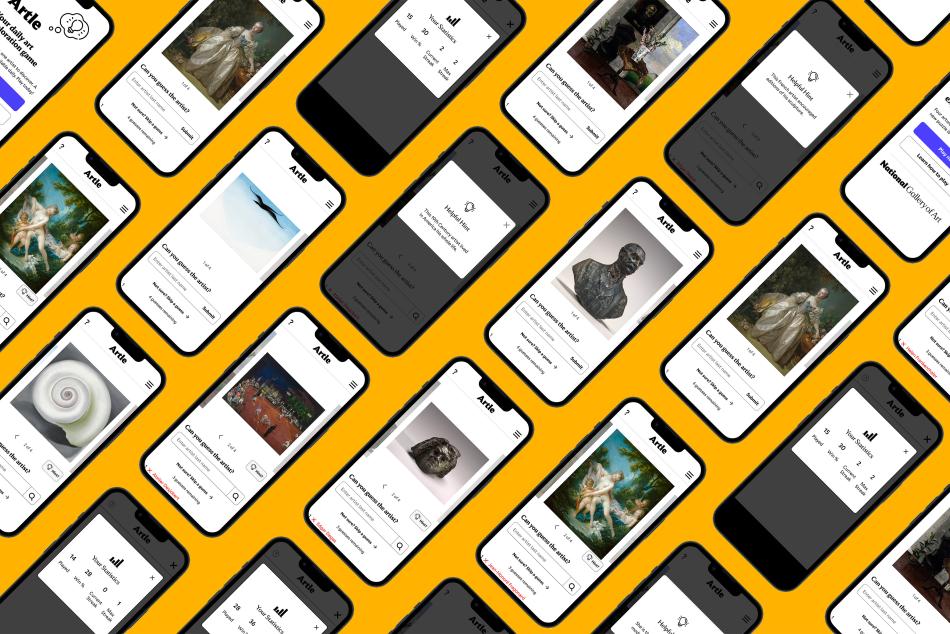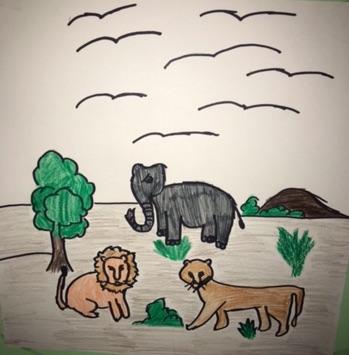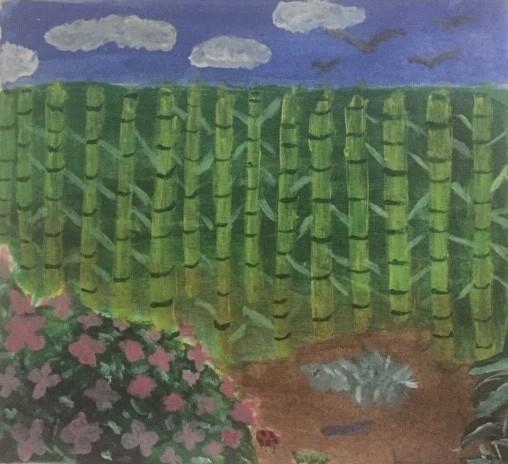Henri Rousseau never saw a real jungle! To make his jungle paintings, he first visited the botanical garden and zoo in Paris, drawing the tropical plants and animals he saw there. At home in his studio, he combined and changed the plants in his sketches to create imaginary jungles for animals from different parts of the world.

Language
Look
How many animals can you find in this painting? Pretend you are one of the animals—do what they are doing.
What color do you see the most? Find different shades of that same color.
Do you think this is a real place or an imaginary place? Why?
What other creatures might be hiding here?
Imagine you are traveling to this jungle. What would you need to wear? What would you plan to do? What would it be like there?
Create a story to go along with this painting. What might happen next?
Read
The Perfect Animal (Spanish langauge version: El animal perfecto)
by Raquel Díaz Reguera
Valentina imagines what it would feel like to be different animals as she thinks about an animal costume for class.
The Fantastic Jungles of Henri Rousseau
by Michelle Markel and Amanda Hall
This book offers the biography of Rousseau and how he taught himself to paint, creating imagined worlds through his art.
Make: Create an imaginary jungle
You Will Need
- Heavyweight paper
- Paints
- Paintbrushes
- Crayons or colored pencils (optional)
Before you begin, you might want to visit a garden or park and, like Henri Rousseau, draw the plants you see there. Notice the colors and shapes of the leaves, and how they are arranged on their stems.
To create your own imaginary jungle, first paint a background of sky and soil (or use colored paper). Add trees, branches, stems, and leaves, referring to your sketches for ideas as you paint. Try mixing paints—add black or blue to green for dark greens, and yellow or white to green for lighter greens.
Are there any animals hiding in your jungle? If so, go ahead and add them now!
After the paint dries, you may want to use crayons or colored pencils to add the final details to your imaginary jungle.
Vocab Bank
- jungle
- palm
- reptile
- tropical
Download
Art Tales: Coloring and Cut-Outs booklet (PDF, 3.5 MB)
Art Tales for Pre-K (PDF, 7.2 MB)
Primeros Pasos En El Arte (PDF, 7.5 MB)
Primeros Pasos En El Arte: Colorear y Recortes (PDF, 3.7 MB)
Rousseau in the Jungle lesson plan
Visit
Register for the Art Tales pre-K school tour
Submit Student Work
Send images of your students' projects that follow these activities - email classroom@nga.gov
You may also like

Educational Resource: Art Starters: Georgia O'Keeffe
A lesson for preschool to kindergarten students about artist Georgia O'Keeffe’s painting Jack-in-the-Pulpit No. 3. Students learn how to look at this painting, what you can read to learn more, how to draw a flower close up, and a list of vocabulary terms related to this activity.

Educational Resource: Art Tales: Alma Thomas
A lesson for preschool to kindergarten students about artist Alma Thomas’ painting Pansies in Washington. Students learn how to look at this painting, what you can read to learn more, how to create a color square, and a list of vocabulary terms related to this activity.

Educational Resource: Art Starters: Claude Monet
A lesson for preschool to kindergarten students about artist Claude Monet’s painting The Artist's Garden at Vétheuil. Students learn how to look at this painting, what you can read to learn more, how to draw a garden, and a list of vocabulary terms related to this activity.




